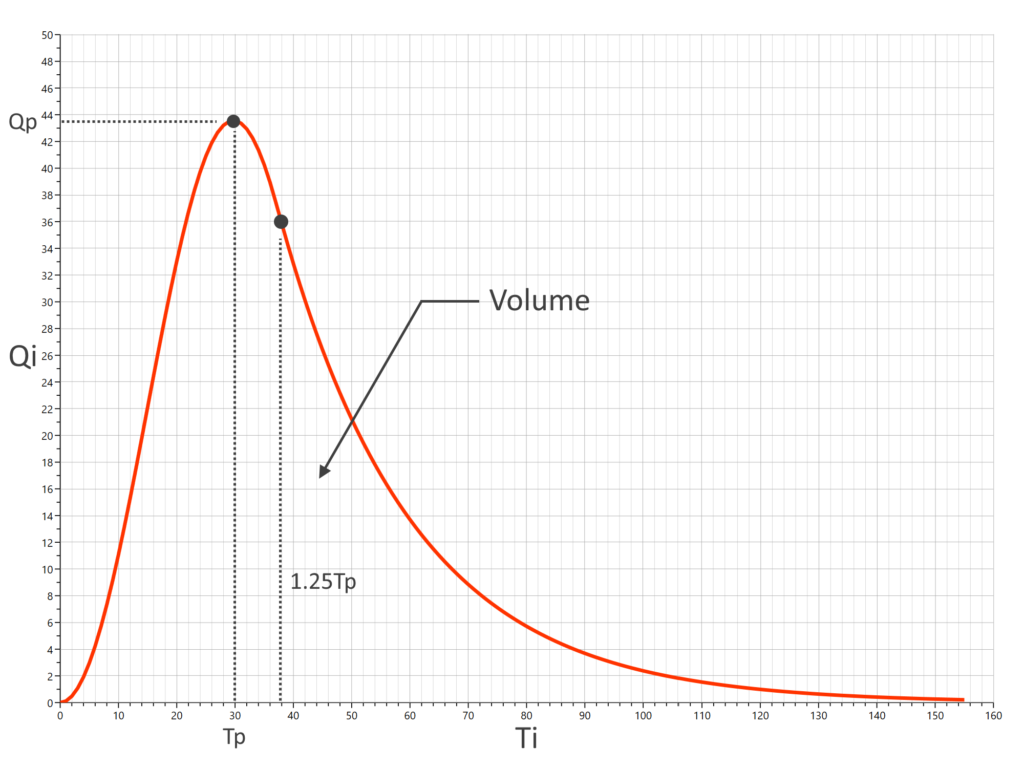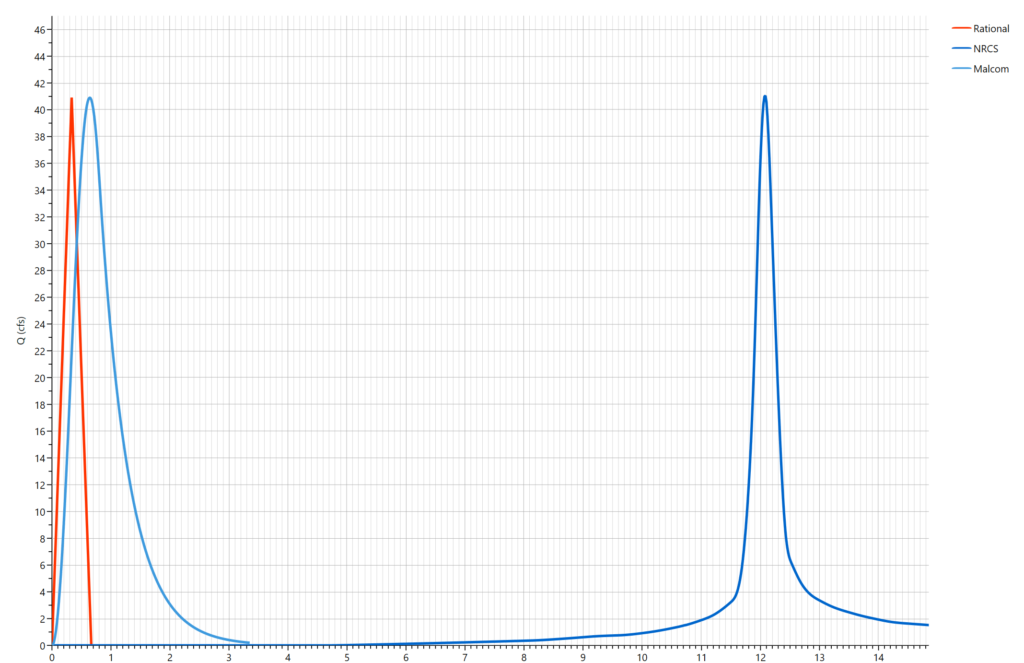The Malcom method hydrograph, also known as the Small Watershed Hydrograph Method, originated from a watershed research study led by H. Rooney Malcom in 1980 in North Carolina. This research aimed to explore stormwater detention as a strategy for mitigating urban streambank erosion and flooding, focusing on identifying the optimal design storm for stormwater detention programs.
A significant outcome of this study was the development of a runoff hydrograph method that effectively integrates the Rational method and the NRCS method, which are well-regarded by engineers. This approach is user-friendly and offers watershed modelers the advantages of both techniques, calculating peak flow using the Rational method while resembling the NRCS unit hydrograph in shape and volume.
One could say that NRCS and Rational got married, had a child… and named it Malcom!
The Malcom method is gaining popularity across the country, especially in Texas, where it is mandated in certain jurisdictions for the design of detention facilities.

Malcom Method Inputs
Due to the meshing of the two methods, Malcom hydrograph inputs are the same as the those for the Rational method:
Drainage Area
Runoff Coefficient, C
Time of Concentration, Tc
Plus the NRCS Curve Number, CN.
Hydrology Studio still allows you to compute a Composite C but only a single value for the corresponding CN. CN can be calculated as:

Where:
IMP = % impervious
X is taken from the table below and is based on the project’s Soil Type.
| Soil Type | A | B | C | D |
|---|---|---|---|---|
| X = | 39 | 61 | 74 | 80 |
For a C = 0.50 and a Soil Type D, an equivalent CN is 98(.50) + 80(1-0.50) = 89.
It is not mandatory but highly recommended to use a Time Interval of one minute for Malcom hydrographs. The Time Interval can be changed in Project Settings.
Malcom Small Watershed Hydrograph Equations
The Malcom hydrograph is constructed in a way that closely resembles the shape of the NRCS Unit hydrograph. It employes two distinct equations to compute flows, Qi, at a given time, ti.




Where:
Tp = Time to Peak
V = Volume (cuft) = Excess precipitation, Q, of the currently selected NRCS design storm (in) x Drainage Area (ac) x 43,560/12
Qp = Peak discharge as calculated by the Rational method (Qp = CiA)
Ti = Time in seconds
Qi = Discharge in cfs at Ti
Note that the total precipitation, P, is automatically pulled from the currently selected design storm. The excess precipitation, Q, is calculated from the following curve number equation:

Where:
Q = Excess volume of precipitation (in)
P = Total precipitation (in) for the selected design storm
S = Potential maximum retention
= (1000 / CN) – 10
CN = Curve Number (Hydrology Studio’s published tables of Curve Numbers assumes an antecedent moisture condition of II)
It is essential to recognize that this method necessitates both a Curve Number (CN) and a Runoff Coefficient (C). These values must accurately reflect their associated land use. Below is a straightforward approach to derive an equivalent CN from a Rational Method C. It is logical to conclude that the Rational Method C indicates a percentage of imperviousness; for instance, a C value of 0.60 signifies 60% impervious surface. An equivalent CN can be calculated as:

Where:
IMP = % impervious
X is taken from the table below and is based on the Soil Type.
| Soil Type | A | B | C | D |
|---|---|---|---|---|
| X = | 39 | 61 | 74 | 80 |
For a C = 0.60 and a Soil Type C, an equivalent CN is 98(.60) + 74(1-0.60) = 88.40.

A Comparison of Malcom, Rational and NRCS
The following is a comparison of the Malcom, NRCS, and Rational methods. All three hydrographs utilized similar inputs, resulting in nearly identical Q peaks. However, the volume produced by the Rational method is significantly lower. Since the excess runoff in the NRCS method is non-linear, one should not anticipate Rational method matching peak discharge values across all return periods.
Drainage area = 10 (ac)
Tc = 20 minutes
Runoff Coefficient (C)= 0.60
CN = 88 (Soil Type C)
Total Precipitation from SCS Type II 24-hour storm

| Hydrograph Method | Peak Flow (cfs) | Volume (cuft) |
|---|---|---|
| Rational | 40.91 | 49,093 |
| Malcom | 40.91 | 131,595 |
| NRCS (SCS Type II 24hr) | 41.04 | 131,595 |
The Malcom method combines the advantages of both approaches, offering the straightforward Peak Q from the Rational method alongside the realistic volume estimates provided by the NRCS method.
